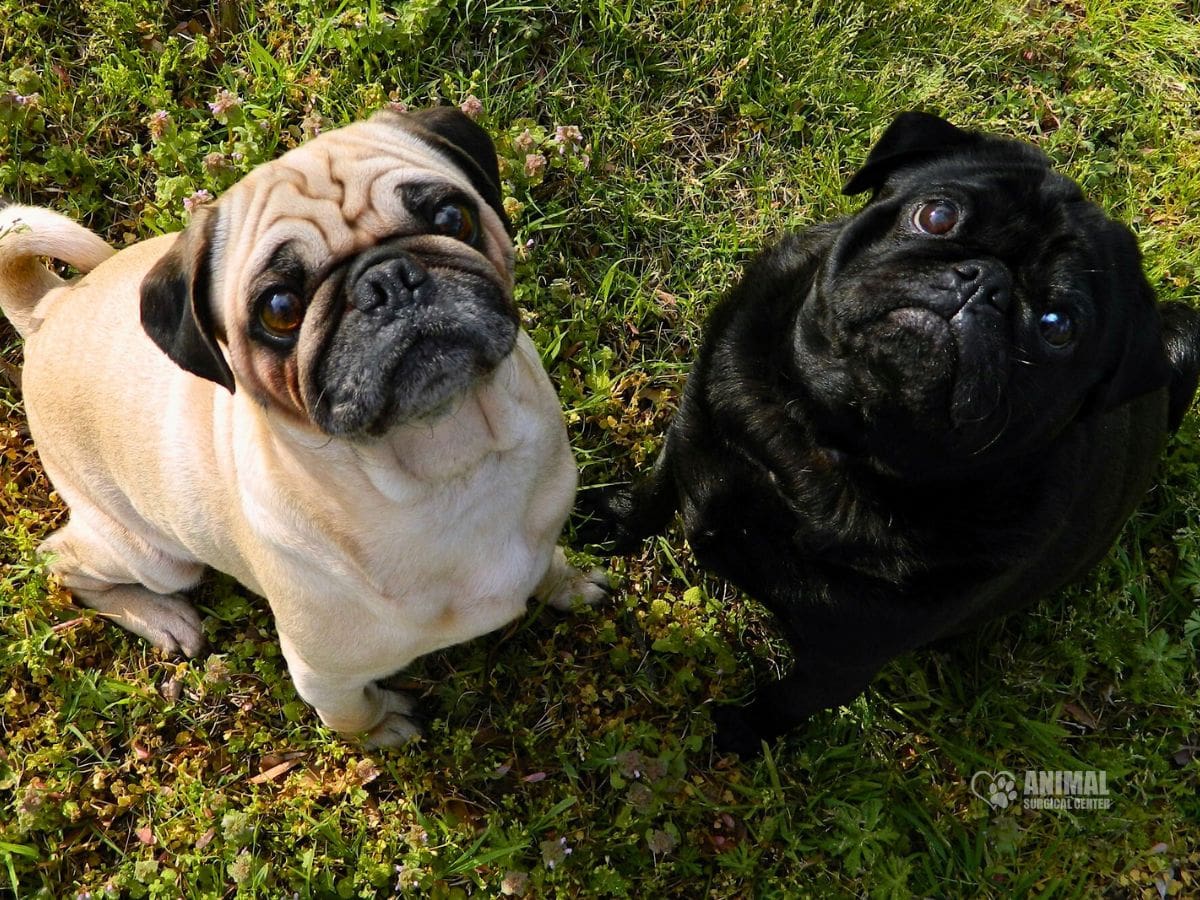Article Release: Issue 4
Release Date: June 26, 2024
Written By: Dr. Tomas Infernuso DVM, DACVS

As temperatures rise, our furry friends are at an increased risk of heat stroke, a life-threatening condition that requires immediate attention. At Animal Surgical Center, we are particularly concerned about brachycephalic breeds—pets with short noses and flat faces such as Bulldogs, Pugs, and Persian cats. These breeds are more susceptible to heat stroke due to their unique anatomical features, including narrowed airways, which can make breathing difficult, especially in hot weather.
Essential Tips for Keeping Your Brachycephalic Pet Safe in Warm Weather
Understanding how to prevent heat stroke in these pets is crucial for their well-being. Here are some essential tips to keep your brachycephalic pet safe during the warmer months.
1. Limit Outdoor Activities During Peak Heat
Brachycephalic pets should avoid outdoor activities during the hottest parts of the day, typically between 10 a.m. and 4 p.m. Instead, take your pet for walks early in the morning or late in the evening when temperatures are cooler
2. Provide a Cool Environment
Ensure your pet has access to a cool and shaded environment at all times. Indoors, use fans or air conditioning to maintain a comfortable temperature. Outdoors, provide shaded areas and avoid hot surfaces like asphalt, which can increase body temperature rapidly.
3. Keep Your Pet Hydrated
Always provide plenty of fresh water. Hydration is vital for regulating body temperature. Consider using a pet fountain to encourage drinking and ensure that water bowls are kept in cool areas.
4. Avoid Overexertion
Brachycephalic pets can easily become overexerted, especially in warm weather. Limit vigorous activities and monitor your pet closely for signs of fatigue or distress. Remember, they may need more frequent breaks than other breeds.
5. Use Cooling Aids
Cooling mats, vests, and even wet towels can help keep your pet’s body temperature down. These aids are particularly useful during car rides or when spending extended periods outdoors.
6. Recognize the Signs of Heat Stroke
Early recognition of heat stroke is critical. Symptoms include excessive panting, drooling, lethargy, rapid heartbeat, and in severe cases, vomiting or collapse. If you notice any of these signs, move your pet to a cool area immediately and contact your veterinarian.
7. Plan for Surgery Wisely
For brachycephalic pets that need surgery to correct airway issues, scheduling the procedure during cooler months can be beneficial. Discuss with your veterinarian the best timing and postoperative care to ensure a smooth recovery.

Scheduling Surgery for Brachycephalic Pets: Timing and Recovery Tip
At Animal Surgical Center, we are committed to the health and well-being of your pets. If you have a brachycephalic pet, we encourage you to schedule regular check-ups to monitor their airway health, especially if they show signs of respiratory distress.
Our experienced team is here to provide advice and medical care, including surgical interventions for airway correction. If you suspect your pet is suffering from heat stroke or if you have concerns about their breathing, do not hesitate to contact us immediately or your local veterinarian. Early intervention can save lives.
For more information on how to care for your brachycephalic pet and to schedule a consultation, visit our website or call us today. Let’s work together to keep our beloved pets safe and healthy this summer.
With Compassion and Care,
Dr. Tomas Infernuso
DVM, DACVS
Animal Surgical Center
About Us
At Animal Surgical Center, our dedicated team is driven by a profound passion - to save as many animals as possible by providing excellent care and service at a fair price.
